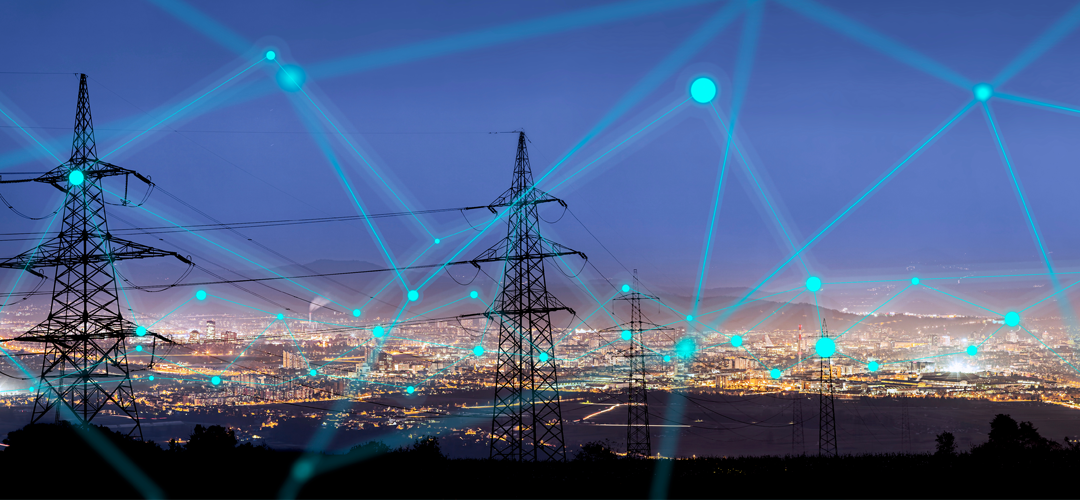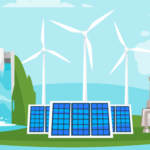Do you want to know how electricity works in Guatemala? Here we explain its history, who are its actors and governing bodies, and how its supply processes work: generation, transportation, distribution and commercialization.
History of electric energy in Guatemala
Starting in 1870, the first generating plants and distribution companies were built. In 1894, Empresa Eléctrica de Guatemala (EEGSA) was created and given a 50-year concession to provide energy to the departments of Guatemala and Sacatepéquez. By 1927, the government inaugurated its first hydroelectric plant.
The year 1959 led to the creation of the National Electrification Institute and it was given the monopoly of the electricity sector. In the 1960s, the INDE-EEGSA interconnected system was established and specialization in generation and distribution began. In addition, the Aguacapa and Chixoy hydroelectric plants were started up.
Between 1983 and 1990, investments declined. There were external loans and most of the debt was paid by the government. There was also a technical credibility crisis: hydroelectric plants failed and blackouts occurred. In 1985, the Constitution declared the electrification of the country as a matter of urgency and the Ministry of Energy and Mines was created.
In 1996, the General Electricity Law was approved. The supply of electricity no longer met the needs of the population and it was necessary to increase production by liberalizing the sector. The National Electric Energy Commission was created and, in 1997, the functions of the Wholesale Market Agent were legally defined. The latter ensures the quality and security of energy supply (Foro Transporte de Energía Eléctrica en Guatemala, 2021).
Let us now see what the electricity supply system in Guatemala is like today.
The processes of the electricity supply system in Guatemala
The National Electric System is known as the set of facilities, generation plants, transmission lines, electric substations, distribution networks, electric equipment and load centers. That is to say, all the electric infrastructure destined to the provision of the service, by means of which electric energy operations are carried out between different regions of the country.
The electricity grid in Guatemala has five main actors. Each with a role in the supply of electricity: in generation, transmission, distribution, commercialization or as a user (Republic, 2019).
Generation
It is the point where energy is produced through different technologies (hydro, wind, solar, geothermal, coal, bunker) (Foro Transporte de Energía Eléctrica en Guatemala, 2021). The facilities are known as power plants or generating plants (Republic, 2019).
Transmission
It involves transporting energy from where it is generated to the point of distribution (Foro Transporte de Energía Eléctrica en Guatemala, 2021). Transportation is made up of towers, transmission lines and power transformation substations (República, 2019).
Distribution
It means transforming energy to adequate voltages for distribution to businesses, industries and homes (Foro Transporte de Energía Eléctrica en Guatemala, 2021).
The electricity distribution companies are responsible for transporting the electricity supply to the homes of regulated users. These are also called “small users” (houses, apartments or small businesses). Your electricity consumption is subject to the rates established by the National Electric Energy Commission (CNEE).
Energuate distributes electricity in 297 municipalities in 20 departments of the country. EEGSA covers the departments of Guatemala, Escuintla and Sacatepéquez. In the areas of operation of municipal electric utilities, power distribution is the exclusive competence of the municipality (Republic, 2019).
Marketing
It involves buying and selling blocks of electricity as an intermediary. That is, without participating in generation, transmission, distribution and consumption (Foro Transporte de Energía Eléctrica en Guatemala, 2021).
The traders are in charge of purchasing energy in the electricity market. They also reach agreements with power generators to then sell electricity supply to users (República, 2019).
Use by users
Demand is made up of electric power distribution (lines and substations), the regulated user and the large user. It is called a large user because its power demand exceeds 100 kilowatts (kW) or the lower limit set by the MEM.
The General Electricity Law establishes that generation, transmission and distribution must be carried out through different companies.
In short, this energy is produced in the generating plants and transferred to the transmission lines. Then, to the distribution system and, finally, it is used by industries, businesses and households (Republic, 2019).
This is the general outlook for electricity in the country. Let us now look at how the processes of the electricity supply system are being transformed as a function of a process of global change: the energy transition.
Energy transition
The electricity sector is changing rapidly for three reasons:
- The global political decision to fight climate change.
- The development of new technologies, renewable energies, batteries and information and communication technologies.
- Transition costs remain high, but are falling rapidly.
Although the details of the future electricity sector are uncertain, there is considerable clarity about its importance, which is key to the energy transition (Ariño, 2020).
The energy transition requires a long-term structural change in energy systems. It implies the replacement of polluting energy sources with clean energies and a progressive decarbonization and electrification of the economy. A first step for this transformation is to accompany structural factors (economic, environmental and social) with innovation and technological feasibility (Siemens, n.d.).
Latin America, Guatemala and renewable energies
There is a 10-country initiative (Chile, Colombia, Costa Rica, Dominican Republic, Ecuador, Guatemala, Haiti, Honduras, Paraguay and Peru). These Latin American nations have committed to achieving the regional target of 70% renewable energy by 2030 (Olade, 2020).
Guatemala has ample potential for electricity generation based on renewable resources, such as geothermal, wind, solar, among others.
The 2008 Energy Policy established that the energy matrix should be diversified, prioritizing renewables. And in 2013, the long-term goal of reaching 80% of electricity generation from renewable resources by 2027 was added. Thanks to this policy, in the bidding processes PEG 1 (2010), PEG 2 (2012) and PEG 3 (2013), Guatemala attracted a lot of investment in new and efficient generation.
Progress was made in diversification. More than 1,100 MW of new capacity was added in 86 projects, 80% of which were renewable plants, most of them small-scale. These investments, in 2015, substantially reduced users’ electricity tariffs (AGER, 2021).
Advantages of the energy transition
It is important that the state continues to move forward in this direction, so that the country can enjoy the full benefits of renewable energy.
Some of these advantages include:
- 27% reduction in the cost of operating the system to cover the demand.
- 14% reduction in marginal market costs.
- Reduction of greenhouse gases by 62%.
- It promotes investment and employment generation in rural areas and improves national competitiveness.
But what is Guatemala doing, concretely, to meet the goals of its Energy Policy? Indicative Generation and Transmission Plans (prepared every 2 years) and electricity generation bidding processes (carried out periodically) are used.
On the success of this depend:
- Compliance with public policies and international commitments.
- The progress of some of the Sustainable Development Goals. Specifically: access to Affordable and Clean Energy, Sustainable Cities and Communities and Climate Action.
- The Paris Agreement in which Guatemala committed to reduce gas emissions by 11.2%.
The Association of Renewable Energy Generators (AGER, 2021) encourages the authorities and institutions of the electricity sector to ensure that the next long-term tenders (such as PEG 4) continue the important progress initiated years ago. In this way, Guatemala will achieve the goal of a renewable and sustainable electricity matrix by 2030.
In short, we can say that the electricity supply system is increasingly using renewable energy sources to produce electricity. These technologies are developing rapidly and are becoming increasingly affordable and competitive. In addition, it is worth noting that, in its energy transition process, Guatemala receives a lot of political and financial support at the global level.






